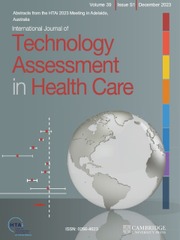No CrossRef data available.
Article contents
PP80 The Value of Intraoperative Neural Monitoring During Thyroid Surgery In China: A Literature Review
Published online by Cambridge University Press: 14 December 2023
Abstract
Recurrent laryngeal nerve (RLN) injury has been a frequent source of malpractice litigation following thyroid surgery. Intraoperative neural monitoring (IONM) has been widely applied to avoid RLN injury in thyroid surgery in developed countries, but China cannot achieve the same application rate currently. To improve the recognition and application of IONM in China, this literature review aims to synthesize the evidence on the value of IONM in China.
A comprehensive literature review was conducted by searching through PubMed, CNKI and Wan Fang to identify studies about the IONM technology for protecting RLN during thyroid surgery in Chinese clinical data.
Nineteen Chinese clinical trials of IONM during thyroid surgery published from 2012 to 2022 were included for review. Almost all studies recruited adults who need thyroid surgery and only one study enrolled geriatric patients. There were three (3/19) prospective studies and two were randomized controlled trials that both showed that IONM helped surgeons to detect the RLN with less time and reduce the injury of RLN in reoperative thyroid surgery. Major studies (16/19) conducted retrospective analysis and six of them (6/16) only had an IONM group that showed that IONM technology can avoid damage to the RLN. The remaining ten studies (10/16) compared patients with and without IONM during the surgery. Compared with the non-IONM group, nine studies (9/10) stated IONM technology has an advantage in the reduction of RLN injury rate and seven studies (7/10) claimed IONM was helpful in reducing the time of surgery. One study believed IONM was beneficial to reducing bleeding during the surgery and another study reported a lower incidence of hypoparathyroidism with the IONM group.
The value of IONM for protecting RLN during thyroid surgery and improving operation efficiency has been thoroughly proven by the above Chinese clinical trials. Further economic evaluations and patient-reported outcomes research of IONM with Chinese hospital data will help better assess the value of IONM.
- Type
- Poster Presentations
- Information
- Copyright
- © The Author(s), 2023. Published by Cambridge University Press




